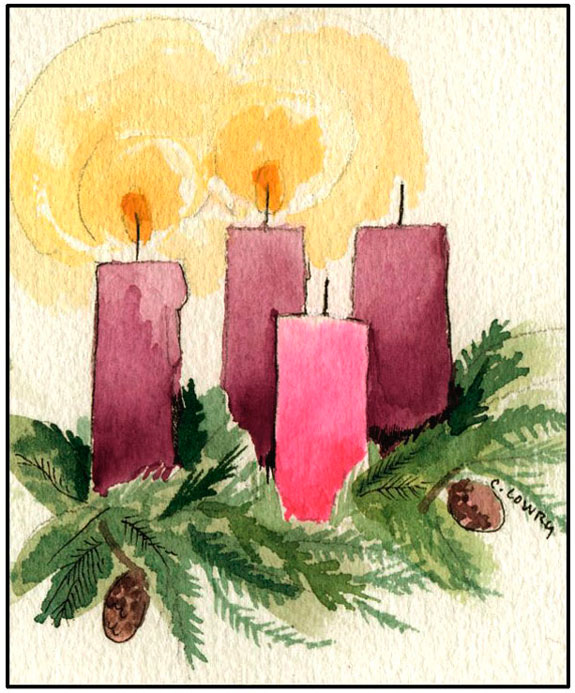My dear brothers and sisters in the Lord,

We have begun the new Liturgical Year with the beginning of Advent. It is a time when not only do we look forward to the birth of Christ at Christmas but also to His final coming at the end of time. It is a time of anticipation, a time when we can give free reign to our human desire for a better future.
The origins of Advent are traced back to the sixth century, sometime after Lent was established as part of the Liturgical Year. Advent copied some of the ascetic practices of Lent, because it is truly a time of conversion but not necessarily one of penance as is Lent. We must be ready to change, to welcome Christ. At Christmas and at the end of time, a Christian is always ready to make himself new as Christ makes all things new.
The personages of Advent truly give us much to think about. First, there is Isaiah, the Old Testament prophet of Advent, who enunciates extraordinary promises that will surround the coming of the Messiah, changes in nature among men. John the Baptist, the last of the Old Testament prophets and the first of the New Testament, is the herald of the Messiah. In the Gospels of this time, we see John from his prison cell sending messengers to Christ to find out if He is the one who is to come, the Christ. Jesus simply responds, “You see the lame walk, the deaf hear.” There are some miraculous signs that Isaiah had predicted that came to pass in the person of Jesus the Messiah.
The last personage who epitomizes Advent is Mary. It is she who waits during the last month of her pregnancy to deliver the Lord Jesus. It is she who eventually recounts the events of the birth of Christ to those who would remember them and eventually write them down as part of the New Testament. Mary serves as the memory of the Lord for us.
Advent can be a special family time of powerful liturgical practices. The Advent wreath is one of the most popular family observances of Advent. It envisions the family around the dinner table in the evening to light the appropriate candle, the three purple and one pink, which signify the anticipation for the coming of the Light of the World.
Many parishes have transferred this celebration to Sunday Masses. It really belongs in the home, however, to gather the family together and to foster the true anticipation so that all can say, “Come, Lord Jesus” or Maranatha, to call for the Lord to come, as the early Christians said.
Each Advent we do put out into the deep preparing ourselves spiritually that the light of Christ can be reborn within us and that we can be more open to seeing the ultimate future to which we are called. Christians are, indeed, an Advent people, those who look forward to the future and prepare for the future with anticipation and good works that serve to show that we are truly ready to change in order to receive the Lord whenever He comes.


